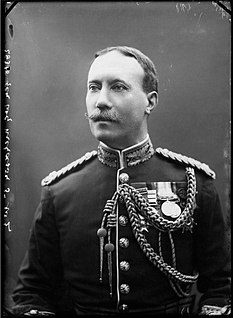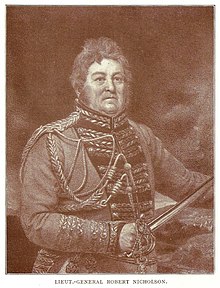
Bombay High Court is one of the oldest High Courts of India. It is located in Mumbai, Maharashtra. Its jurisdiction covers the states of Maharashtra and Goa, and the Union Territories of Daman and Diu and Dadra and Nagar Haveli. The High Court has regional branches at Nagpur and Aurangabad in Maharashtra and Panaji, the capital of Goa.

The Second Anglo-Sikh War was a military conflict between the Sikh Empire and the British East India Company that took place in 1848 and 1849. It resulted in the fall of the Sikh Empire, and the annexation of the Punjab and what subsequently became the North-West Frontier Province, by the East India Company.

The First Anglo-Maratha War (1775–1782) was the first of three Anglo-Maratha wars fought between the British East India Company and Maratha Empire in India. The war began with the Treaty of Surat and ended with the Treaty of Salbai.

The Royal Indian Navy (RIN) was the naval force of British India and the Dominion of India. Along with the Presidency armies, later the Indian Army, and from 1932 the Indian Air Force, it was one of the Armed Forces of British India.

Brigadier John Nicholson was a Victorian era military officer known for his role in British India. A charismatic and authoritarian figure, Nicholson created a legend for himself as a political officer under Henry Lawrence in the frontier provinces of the British Empire in India. He was instrumental in the settlement of the North-West Frontier and played a noted part in the Indian Mutiny.

Field Marshal William Gustavus Nicholson, 1st Baron Nicholson, was a British Army officer who served in the Second Anglo-Afghan War, the Mahdist War, the Third Anglo-Burmese War, the Second Boer War and the First World War. He became Chief of the Imperial General Staff and was closely involved in the reorganisation of the British Army in the early years of the 20th century.

General Sir Robert Abercromby, the youngest brother of Sir Ralph Abercromby, was a general in the army, appointed Knight of the Order of the Bath, a Governor of Bombay and Commander-in-Chief of the Bombay Army and then Commander-in-Chief, India.
Sir George Russell Clerk (1800–1889) was a British civil servant in India.
David Oliver Allen (1800–1863) was an American missionary, born at Barre, Massachusetts.
Brigadier-General John Carnac was a British officer who served three times as Commander-in-Chief of India.
Robert Nicholson may refer to:

The presidency armies were the armies of the three presidencies of the East India Company's rule in India, later the forces of the British Crown in India, composed primarily of Indian sepoys. The presidency armies were named after the presidencies: the Bengal Army, the Madras Army and the Bombay Army. Initially, only Europeans served as commissioned or non-commissioned officers. In time, Indian Army units were garrisoned from Peshawar in the north, to Sind in the west, and to Rangoon in the east. The army was engaged in the wars to extend British control in India and beyond.
Major General Robert Bowles was an officer in the British East India Company Army for 35 years. He was commander in chief in Bombay in 1800.

Nawab Muhammad Hayat Khan (1833–1901) was an Indian Muslim who served the Government of British India and rose to considerable distinction.

Sir Andrew Richard Scoble (1831–1916) was an English lawyer, politician and judge.
The New Year Honours 1903, announced at the time as the Durbar Honours, were appointments to various orders and honours of the United Kingdom and British India. The list was announced on the day of the 1903 Delhi Durbar held to celebrate the succession of King Edward VII and Queen Alexandra as Emperor and Empress of India. The membership of the two Indian Orders were expanded to allow for all the new appointments.
Dara Nusserwanji Khurody was an Indian entrepreneur known for his contributions to the dairy industry of India. He worked in various private and government organization at the start of his career and also held government official positions later on. He was the Milk Commissioner of Bombay from 1946 to 1952. His name was considered "synonymous with dairying" in India in the 1950s. He received the Ramon Magsaysay Award jointly with Verghese Kurien and Tribhuvandas Kishibhai Patel in 1963 and the Padma Bhushan from the Government of India in 1964.
Upton Castle was launched at Bombay in 1793. She spent her career as a "country ship", that is trading in the Far East. She made some voyages to England, including at least one, in 1809, under charter to the British East India Company (EIC). She also participated in two military campaigns as a transport. The French Navy captured her in 1804, but she returned to British hands before 1809. A fire in 1817 destroyed her.










